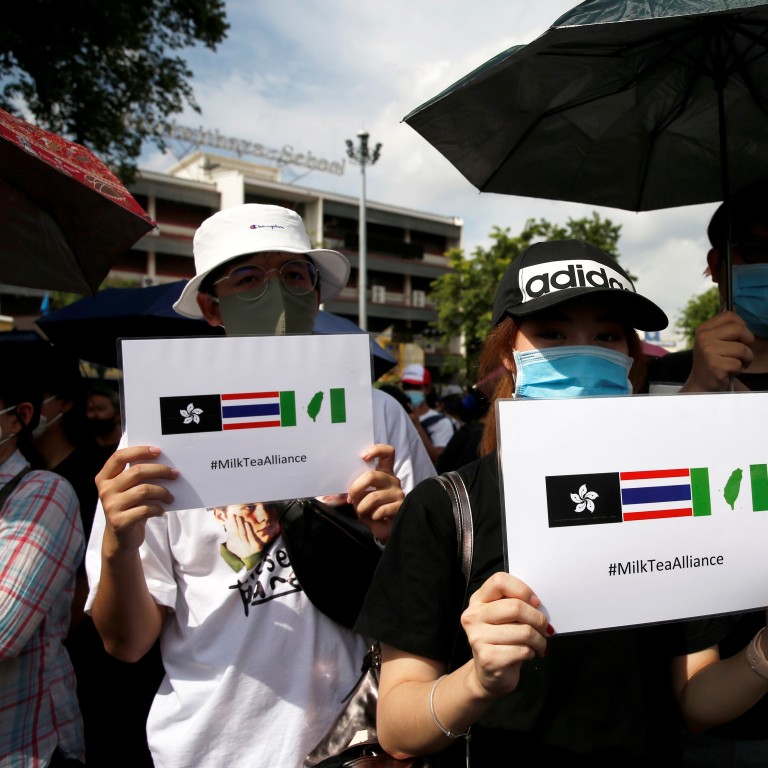
Milk tea: from a colonial concoction to a transnational solidarity movement
- There is more to milk tea than the Oxford English Dictionary, which added the term in 2016, suggests
- Across Asia the drink has developed according to local tastes and preparations
The #MilkTeaAlliance continues to grow as a regional solidarity movement of protesters from Thailand, Taiwan and Hong Kong, its moniker coming from the beverage typically found in their cultures.
The Oxford English Dictionary (OED) describes it as “any of various drinks made with tea and milk or cream” – but milk tea is not just “tea with milk”; the reference is actually more specific.
Cultures worldwide have long consumed “milk tea” beverages, including masala chai (“mixed-spice tea”) in India, traditionally using water-buffalo milk, and Mongolian salty “tea with milk”, suutei tsai. An early appearance of the term in English dates from 1897, describing how “a decoction known as nai-ch’a, or ‘milk-tea’, is drunk at the Manchu court, and is served out on state occasions”.
However, the version that prompted the adoption of the term in English evolved in colonial Hong Kong. While origins lie in the British “tea with milk”, the Hong Kong style uses evaporated (or condensed) milk – forms that kept better in the colonies then – with tea leaves strained through sackcloth. Ordered in Cantonese as náaihchà “milk tea” – distinguished from chà “ (Chinese) tea” served without milk – this in bilingual Hong Kong was readily calqued into English as “milk tea”.
Used on English-language platforms, for example, in a 1966 South China Morning Post article, the term gained traction in pre-handover local identity construction discourse. In 2016, “milk tea” was included in the OED, with a nod to its specific reference to Hong Kong’s version (which, incidentally, was included as an item of the city’s Intangible Cultural Heritage in 2017).
Taiwan also has milk tea, typically made with powdered creamer introduced by American foreign-aid programmes during the Cold War. This developed in the 1980s into a cold drink, shaken over ice to produce a foamy top, giving bubble tea, noted in English in a 1993 Taipei publication.
Soon thereafter came the addition of tapioca pearls (popularised in Southeast Asian desserts), giving pearl milk tea, from the Mandarin zhēnzhū nǎichá, as well as boba (tea), slang for female breasts. Reference to boba gained currency in the 2000s, notably in America, due to its popularity among the Asian diaspora.
Recognising particular names for local tea preparations – including Thai cha yen “cold [milk] tea”, and the Singapore and Malaysian English teh tarik, from Malay “tea pulled/drawn out”, milk tea poured between two containers to create a thick foam – helps to retain the diversity of languages and cultural practices, avoiding the ironic homogeneity of global chains’ chai lattes.

